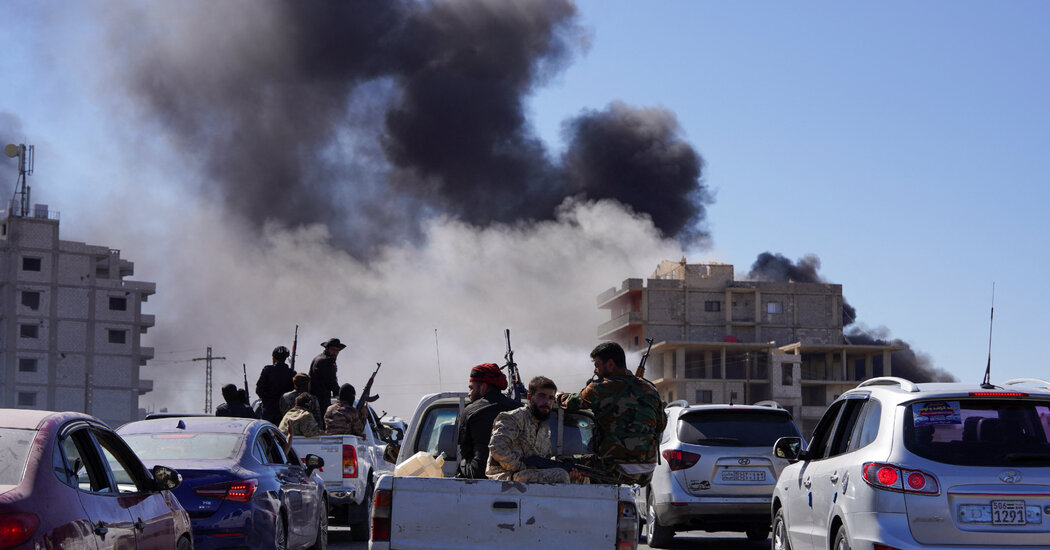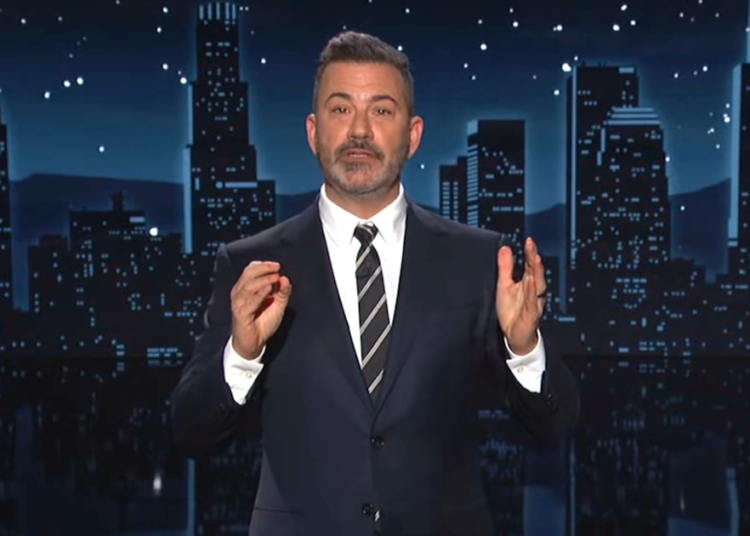A wave of deadly Israeli airstrikes targeted government forces in Syria and the Iran-backed group Hezbollah in Lebanon on Tuesday, escalating what Israel said were efforts to secure its northern border.
The strikes in Syria were a rare attack on forces of the new government, which is led by Islamist former rebels who toppled the dictator Bashar al-Assad in December. Since the fall of the Assad regime, Israel has launched hundreds of airstrikes in Syria and deployed forces across a demilitarized buffer zone between the two countries.
But it has seldom attacked the government’s military and the two countries recently opened diplomatic contacts to try to lower tensions and conflict between them.
The Syrian government condemned the Israeli attack and said it was aimed at undermining the country’s stability. It said a number of its forces had been killed as had civilians.
Dozens of people have been killed this week in violence that erupted in the southern province of Sweida, triggered by a series of kidnappings involving Syria’s Druse minority and pro-government Bedouin tribal groups.
The Syrian government said it had sent forces on Monday to try to calm the violence in Sweida, the Syrian Druse heartland. But those forces became embroiled in clashes with local Druse fighters, leading Israel to respond with two straight days of airstrikes on government fighters.
Both Israel and Syria have sizable Druse minorities, and in Israel, Druse serve in the national military. Israeli leaders have offered to protect Syrian Druse should they come under attack during the country’s post-Assad transition.
Sweida Province is home to an array of Druse militias, many of which have resisted efforts to integrate into the new national armed forces.
The government and local Druse figures in Sweida reached an agreement on Tuesday to quell the violence, although the cease-fire deal has proved shaky, with reports of continued attacks. The U.S. special envoy to Syria, Thomas J. Barrack Jr., said Washington was mediating to restore calm.
The clashes in Sweida were the latest flare-up of sectarian violence in Syria, where tensions linger from a nearly 14-year civil war. Footage verified by The New York Times gave a glimpse of the chaos.
One video shows houses on fire on Sunday as armed men walk through al-Tireh, a village in Sweida Province. In another video, gunfire can be heard down the main road of al-Mazraa, a village where government forces were said to be engaging in clashes.
Some videos showed convoys of government-affiliated forces that appeared to be on their way to the region on Monday. A graphic photo circulating on social media showed the aftermath of an ambush on those convoys. The bodies of at least nine men, wearing camouflage, lay in a group on a road, some covered in blood.
In neighboring Lebanon, Israeli airstrikes hit the eastern Bekaa Valley, a bastion of support for Hezbollah. The attack killed 12 people, most of them Syrians, who often work in agricultural in the area, said the regional governor, Bachir Khodr.
It was the deadliest Israeli strike on Lebanon since a cease-fire was reached in November — ending the most destructive war in Lebanon in decades. The war began with Hezbollah firing rockets into Israel in solidarity with its ally, Hamas, in Gaza after Hamas led the Oct. 7, 2023, attack on Israel.
The airstrikes on Tuesday targeted facilities belonging to Hezbollah’s Radwan unit, the spearhead of the group’s fighting force, according to the Israeli military. Hezbollah said the attack targeted civilian water infrastructure, calling it a “significant escalation.”
Israel’s defense minister, Israel Katz, said the attacks were “a clear message” to both Hezbollah and the Lebanese government that Israel would respond with “maximum force” to any attempt by the group to restore its military capabilities.
In recent weeks, Israel has been intensifying attacks on Hezbollah in what Lebanese officials and diplomats say is an attempt to pressure it to disarm — a core requirement of the fragile truce agreement.
Battered by the conflict, Hezbollah says it has already withdrawn its fighters from southern Lebanon. But it has refused to lay down its arms nationwide, insisting that Israel must first stop its near-daily attacks on Lebanon and withdraw from five positions in the country’s south that it still occupies in violation of the November truce.
Israel has said it will keep up attacks and hold onto the positions in southern Lebanon because Hezbollah still maintains an armed presence in the area.
The stalemate has raised fears of renewed conflict.
Lebanese authorities say Israel’s strikes are frequently conducted without prior coordination with the U.S.-led cease-fire monitoring committee, which is supposed to mediate consultations between the sides on sites that could potentially be targeted for attack.
The Lebanese military did not receive any request from Israel on Tuesday to inspect the facilities that were targeted before the attack, according to a senior Lebanese security official, who spoke on condition of anonymity to discuss sensitive military matters.
The Lebanese military has warned that it may suspend cooperation with the U.S.-backed mechanism if such unilateral actions continue.
Sanjana Varghese and Gabby Sobelman contributed reporting.
Euan Ward is a Times reporter covering Lebanon and Syria. He is based in Beirut.
The post Israel Stages Rare Attack on Syrian Government Forces appeared first on New York Times.




